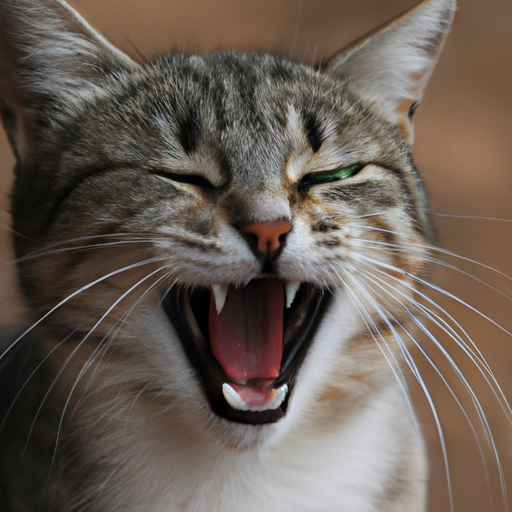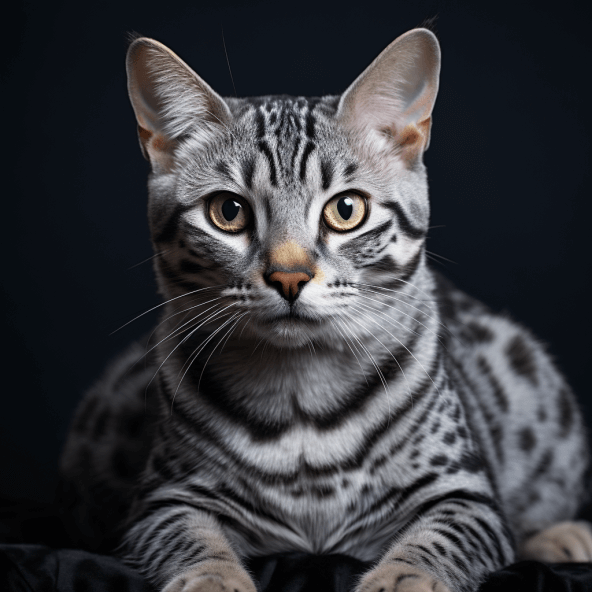Why Do Cats Meow?
Just imagine, you’re lounging on your couch with a warm cup of tea, engrossed in a gripping novel. A soft, high-pitched sound breaks the silence – your cat’s meow. You may have dismissed it simply as your feline’s unique way of communication. But, have you ever stopped to ask – why do cats meow? This piece of writing brings you an engaging exploration of our feline friends’ distinctive language, divulging the intriguing whys and hows behind their various vocalizations. Brace yourself for an enlightening journey through the fascinating world of cat communication. “Why Do Cats Meow” is far more than just a title, it’s a mind-opening glimpse into the nuanced dialect of our beloved four-legged companions. Only the curious need to venture forth.
Understanding Meowing as a Form of Communication
As a cat owner or enthusiast, you’ve probably found yourself wondering why cats meow. While it may seem confusing or even nonsensical at times, meowing is the primary way cats communicate with humans. Understanding these unique feline sounds can help you build a stronger bond with your cat and better cater to their needs.
The basics of feline communication
Your feline friend is a master of nonverbal communication, using everything from their posture, tail position, ear orientation, and even the dilation of their pupils to express feelings. But when it comes to vocalations, meowing is the standout form of expression.
Difference between cat vocalization and other animal sounds
While various animals have their unique way of vocalizing, cat vocalization stands apart due to its versatility and nuance. Depending on modulation, a single ‘meow’ can mean a multitude of things, from contentment to a plea for help.
The Evolution of Meowing
The art of meowing has undergone significant evolution from the time of their wild ancestors to our modern household pets.
From wild cats to domestic pets
In the wild, big cats often use vocalizations for mating calls or territorial markings. Domestic cats, in contrast, have developed a more complex system of communication via meowing as they’ve become more aligned with humans.
How kitten mewling evolves into adult cat meowing
Interestingly, meowing starts as a form of communication between kittens and their mother. As cats age, their delicate mewls gradually mature into a variety of meows, each indicating a different desire or emotional state.

Different Types of Meows and Their Meanings
As stated before, meowing is quite a versatile form of communication, ranging from a simple short ‘meow’ to a complex series of sounds, each with unique connotations.
Short meow
A short meow is often a form of basic greeting, much like a person saying “hi.” It’s a way of acknowledging your presence.
Multiple meows
Consecutive meows, especially delivered in quick succession, can be interpreted as an expression of excitement or even impatience. This usually happens when you’ve been away for a while and your feline friend is just too excited to see you.
Mid-pitched meow
A mid-pitched meow often signals a request for something, perhaps food or your attention.
Drawn-out meow
A lengthy, drawn-out meow may indicate a more demanding request or a complaint, indicating that your cat is not particularly happy with something.
Why Cats Meow at Humans
Cats rarely ever meow at each other, which means that these sounds are mostly meant for us humans.
Cats communication with humans
Cats meow at humans to tell us about their needs, desires, and feelings. Meowing is an effective way for cats to capture our attention.
Why cats don’t typically meow at each other
Contrary to behavior with humans, adult cats rarely meow at each other, instead choosing body language, facial expression, and touch to communicate amongst themselves.
Understanding cat ‘conversations’ with humans
Every conversation with your cat is an observation exercise. Paying attention to the different types of meows, their timings, and pitch can help you decode your cat’s language.

Common Reasons Why Cats Meow
Although it’s essential to know the different types of meows, it’s equally important to understand the reasons why your cat might be meowing in the first place.
Asking for food
One of the most common reasons cats meow is to demand food. If your cat has a tendency to meow around mealtime, that’s probably what they’re asking for.
Seeking attention
Sometimes, cats just want to be noticed, petted, or played with. Meowing is their specific way of catching your attention.
Indicator of illness or pain
Frequent or uncharacteristic meowing could be a sign your cat is ill or in pain. If you notice changes in the frequency, volume, pitch, or intensity of your cat’s meows, it may be time for a veterinary check-up.
Possible stress or anxiety
Just like humans, cats can experience stress and anxiety. Increased meowing can be one of the manifestations of these psychological states.
Do Different Breeds Meow Differently
Not all meows are created equal, as they can vary significantly from breed to breed.
Breed-specific meows
Some breeds have characteristic meows. For example, Siamese cats are known for their loud and frequent vocalizations, whereas Persian cats are typically quieter.
Comparing meow sounds across various cat breeds
While breed can play a role in the sound of a meow, remember that each cat is unique, so their meow will reflect their personality more than anything else.
Cats’ Meows During Different Times of the Day
Ever wonder why your cat’s meowing seems to fluctuate throughout the day? It’s likely linked to their natural rhythms and habits.
Nighttime meowing
Cats are naturally more active at night, so it’s quite common for them to use meowing as a way to draw your attention during your down-time or while you are sleeping.
Morning meowing and feeding cues
Many cat owners are greeted with a concert of meows in the morning, often due to hunger. Your cat has probably learned that a morning meow fest is an effective way to get you out of bed to serve breakfast.
Evening ‘welcome home’ meows
After a day of separation, your cat might give you a series of joyful meows when you return home, expressing their happiness to see you again.
Handling Excessive Meowing
While meowing is a natural aspect of feline behavior, excessive meowing can become a problem.
Identifying excessive meowing
Some cats naturally meow more than others, but uncharacteristically loud, frequent, or intense meowing may indicate a problem.
Ways to reduce unwanted meowing
You can manage excessive meowing by ensuring your cat’s basic needs are met, devoting time to play, and providing ample stimulation during the day.
When to seek veterinary assistance
If your efforts to reduce excessive meowing prove unsuccessful, or you believe the excessive meowing is the result of pain or illness, it’s critical to seek veterinary assistance.
The Science Behind Meowing
While understanding the different types of meows and their meanings is essential, knowing the science behind meowing can provide a more complete overview of this feline phenomenon.
The physical process of meowing
The meow starts as air moves from the cat’s lungs through the vocal cords. The muscles of the larynx change the shape of the airway to produce the different pitches, volumes, and tones of a cat’s meow.
Neurological aspect of meowing
How and when a cat decides to meow involves neurological processes corresponding with their emotional state and intentions.
Non-Vocal Communication in Cats
While meowing is the most obvious sound cats make, their repertoire of non-vocal communication is vast and fascinating.
Body language and its role
Cats communicate a myriad of messages through body language. By observing your cat’s posture, tail movement, and ear positioning, you can tell if your cat is relaxed, alert, agitated, or scared.
Purring, hissing, and other non-meow sounds
Besides meowing, cats make other vocalization types like hissing, growling, and purring, each indicating specific feelings from rage to euphoria.
The importance of scent marking
Your cat also communicates through scent marking, a behavior typically associated with territorial boundaries or showing affection.
Understanding the complexity of meowing and other forms of feline communication can enrich your relationship with your cat and let you provide better care, bonding, and interaction. Keep those ears open; your cat has a lot to say!







